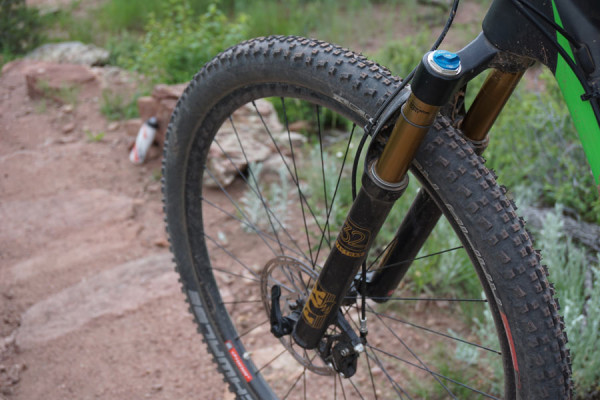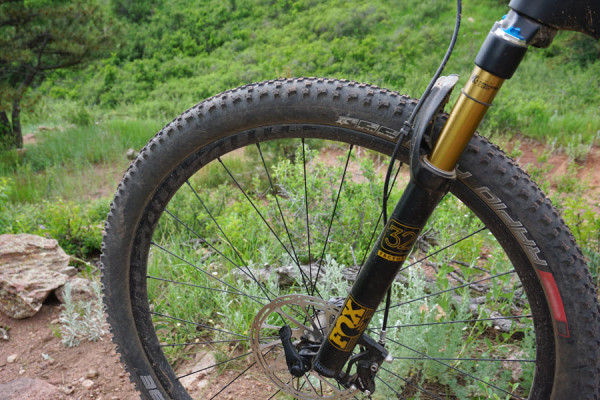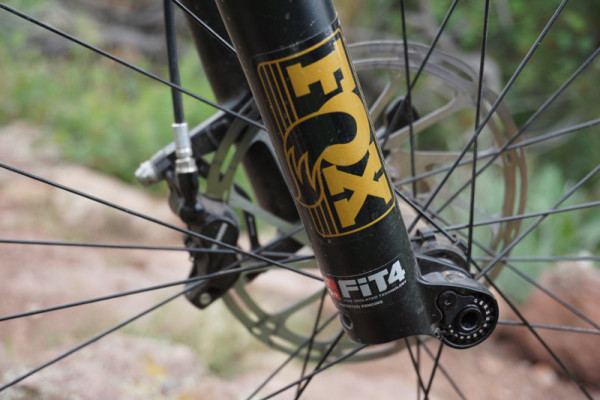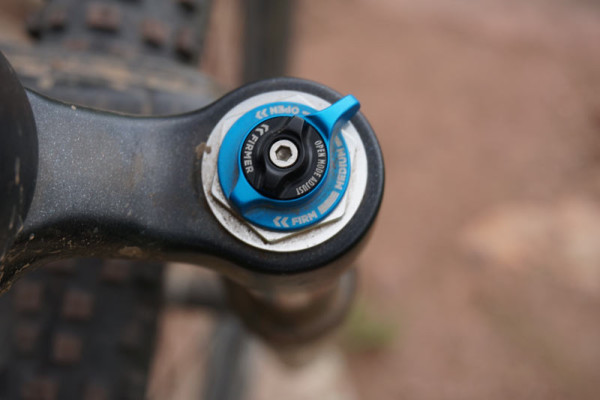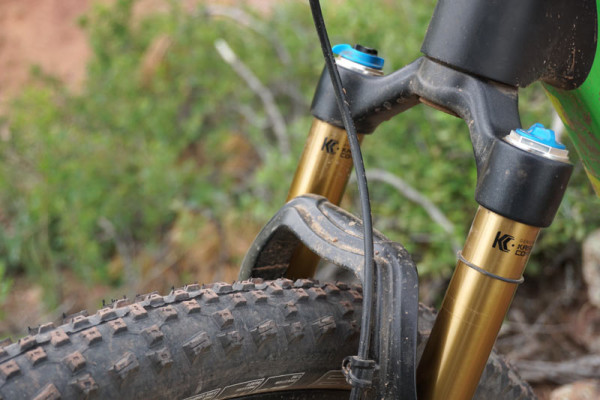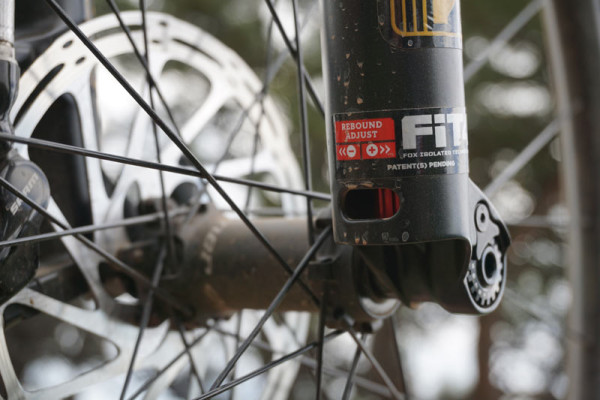At Sea Otter this year, Fox unveiled their entire 2016 suspension lineup with some impressive sounding tech and major improvements from the prior generation of CTD forks. The best news of all was that the new FIT4 cartridge would spread from the 34 to the other forks to provide drastically better damping.
On the prior models, I simply never used the “Descend” mode because the damping essentially disappeared and the fork would dive through its travel under hard braking or even the smallest of hits. To remedy this, the FIT4 system reworked oil flow on both compression and rebound damping circuits and changed the controls around a bit.
I had the chance to ride a 2016 32 FLOAT fork with 110mm boost axle spacing around Fort Collins, CO, for a few hours and the improvements are immediately apparent and amazing.
The 2016 32 keeps the same chassis as the 2015 model, only the internals change. It’s available in 100mm (tested), 120mm and 140mm travel options. I can’t show you the bike it’s attached to, but this one’s a 29er with 110mm front hub spacing and 15mm thru axle.
In addition to the new FIT4 cartridge, the 32 gets the new air spring that uses an automatically adjusted negative air chamber in place of the old coil spring negative.
The new compression adjustment knob switches between open, medium and firm. Firm is not a full lockout, but might as well be. Medium splits the difference, and Open is where you wanna be.
The small black dial is the Open Mode Adjust and only comes on the top-level Factory editions. Fox claims 22 clicks of adjustment, but I wasn’t able to feel distinct indents with gloved fingers. But, it did turn easily and made several rotations worth of spinning. It did open up the fork a bit when turned all the way counter clockwise, but the change from firmest to least firm wasn’t as drastic as expected.
What impressed me most is I was able to keep the fork in Open for the entire ride. Climbing, descending, standing, seated – didn’t matter. The Open mode is now (finally) so good that it works across all types of riding. Technically I did switch it to the Medium mode for a minute just to see, but the Open mode had the right mix of support and suppleness that it’s almost a set-it-and-forget-it-mode.
I ran it with with approximately 18-20% sag (eyeballing it), so the fork could be set up with a bit more sag if conditions warranted a softer setting for rough descents, in which case the Medium setting might get a little more use.
Even with spirited standing sprinting or slow standing climbing, there was minimal fork bob. I experienced no undue brake dive, and steep technical descents with plenty of rocks, drops and angled transition bumps were no problem.
I never had to mess with the rebound adjustment. Wherever it was set worked great (I wasn’t the first person to ride the test bike), keeping the tire planted on the ground. I was running about 24psi, which felt rather soft in the 29×2.25 Schwalbe tires, and was a bit low considering they were running tubes, so that helped with traction also.
Considering how bad the Descend mode was (sorry Fox), the new forks are a giant leap forward in performance, and that’s something anyone could tell from just one ride. More than ever, we’re looking forward to more time on the new forks.
Now, about that Boost 110mm spacing: Part of the story is the entire package, and the bike I was riding was designed to be very, very laterally stiff. Even so, once I got used to the bike, it became more apparent just how stiff the wheels were. Everything went where it was pointed with zero hesitation, and that’s with Fox’s smallest stanchion fork. Hard corners and long swooping sections both showed off the wheels’ stability, but it was the latter where I had time to soak it in and think “Hmmm, yeah, this Boost thing might be just the ticket.” I’m optimistic, despite the PITA it’s going to be for everyone over the next few years, and look forward to trying a Boost version of a bike I’m more accustomed to.
